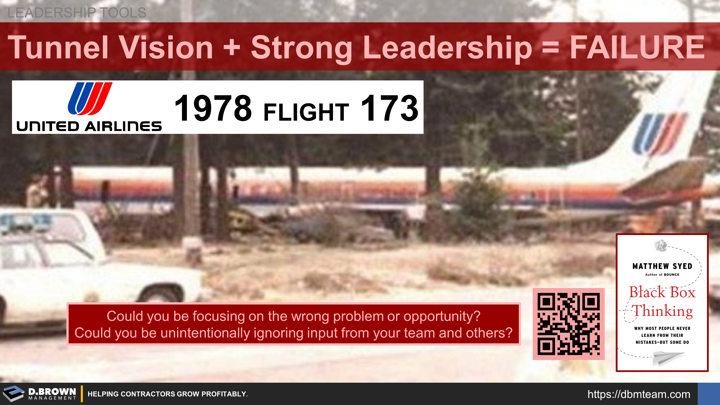This is absolutely the leadership required to bring a project out of the ground, set up a new department such as prefab, enter a new market, launch a new branch office or found a contracting business.
As a contractor grows the leadership styles must also adapt along with the entire team dynamics. The airline industry has learned this through many failures including United Flight 173.
It would be too easy to blame the captain, but similar incidents had occurred in the past. Root Cause Analysis pointed to deeper cultural and training issues. There hasn’t be an incident like this since.
Our mission is to help contractors build stronger businesses for the next generation. We spend a significant amount of our time helping prepare leadership teams for succession and have learned many lessons along the way.
Every failed succession we have seen has been a failure of talent not being properly aligned and not a failure of available capital or deal structure.

